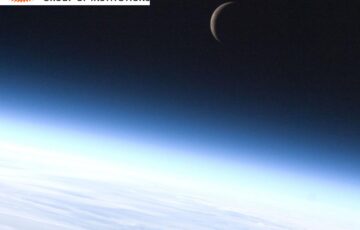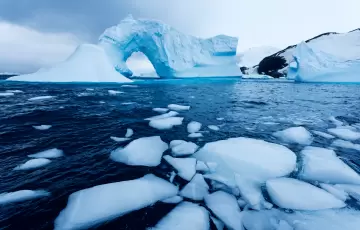Analyse the various theories tried to explain the distribution of ocean and the continents?
- Continents and Ocean basins being fundamental relief features of the globe are considered as ‘relief features of the first order’.
- The distribution of the continents and the oceans is explained by the number of hypotheses and theories ranging from tetrahedral hypothesis, Continent Drift theories, and Plate Tectonic theory, etc.
Some of the theories:
Tetrahedral Hypothesis of Lowthian Green (1875):
- It is based on geometrical principles and characteristics of tetrahedral. It has explained:
- Dominance of land in the northern and water areas in the southern hemisphere.
- Triangular shape of the continents and oceans.
- Ocean at north pole and Continents at the south pole.
- Location of the chain of folded mountains around the pacific oceans.
- Balance of earth in the form of tetrahedral shape, permanency of continents and oceans are some of the arguments that criticised the theory and paved the way for the Continent Drift Theory of Taylor.
Continent Drift Theory of Taylor:
- B. Taylor’s concept of ‘horizontal displacement of the continents’ to explain the origin of the folded mountains of the tertiary period.
- He said:
- In the Cretaceous period, there were two land masses called Laurasia and Gondwanaland along with north and south poles respectively.
- Taylor’s continents moved towards the equatorward and westward under the tidal force of the moon.
- Movement of land mass resulted in tensional forces which caused stretching, splitting and rupture in the landmass.
- Gondwana splitted into a number of continents and islands.
- Movement of Laurasia towards the south formed the Alps, Caucasus, and Himalayan.
- The theory of Taylor was criticised on the following grounds like:
- He made the continents move at a very large scale but it required little movement to build present mountains.
- If the tidal force of the moon can move such large continents, then it might put a break on the rotary motion of the earth.
- Although the theory of F.B. Taylor is not acceptable but his hypothesis raised a voice against the concept of permanency of continents and ocean basins.
Continent Drift Theory of Wegener (1912):
- Main objective behind his displacement hypothesis was to explain the global climate changes that took place in geological time of earth.
- Continental or sialic masses were floating on sima without any resistance offered by sima.
- He had also advocated the concept of a single landmass (Pangaea).
- Subsequent division in Pangaea eventually resulted in the present distribution of the landmass.
- Evidence in Support of the Continental Drift
- The Matching of Continents: E.g. The shorelines of Africa and South America (in reality both of the continents can’t be refitted).
- Rocks of Same Age Across the Oceans as per radiometric dating.
- Tillite: The sediments from India are known to have its counterparts in six different landmasses of the Southern Hemisphere.
- Placer Deposits: The occurrence of rich placer deposits of gold in the Ghana coast came from the gold bearing veins in Brazil.
- Distribution of Fossils: When identical species are found on either side of the marine barriers, a problem arises regarding accounting for such distribution.
- Wegner’s hypothesis assumed that equatorward movement of the sialic (continental) block was caused by the gravitational differential force and force of buoyancy (Earlier he said that Sial is floating on the sima without any friction, a contrasting view).
- Westward movement was caused by the tidal force of the sun and the moon (in reality not sufficient to drag continents).
- Horizontal displacement of the continents, a central theme of Wegener’s theory retained and leads to the Plate Tectonic Theory.
Plate Tectonic Theory (PTT):
- Hess postulated the concept of the plate tectonic theory in 1960.
- Concept of the continental drift and the sea floor spreading were the main concepts behind the PTT.
- Theory postulated the Paving Stone Hypothesis where ocean crusts are newly formed at mid-oceanic ridge and destroyed at the trenches.
- It divides the plates margins (All tectonic activities occur along the plate margins) in to:
- Constructive Plate Margins: Eg. Mid Oceanic Ridge of Atlantic.
- Destructive Plate Margins: Eg. Ring of Fire around the Pacific.
- Conservative Plate Margins: Eg. Plates of Indian and Antarctica.
- The moving molten magma is considered as the driving force behind the motion of the plate in the plate tectonic theory.
- The hypothesis of plate tectonics is considered the most reasonable and acceptable theory till date to explain the motion of plates and formation of the different relief features of the first order.
Hence, we can conclude that the PTT is last in the chain of the theories and the most acceptable one as well.







